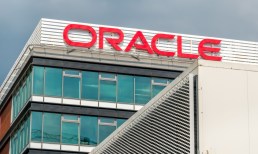With the online grocery space having exploded in the last couple years, consumers are no longer satisfied with a 2019- or even a 2020-level experience.
Just the convenience of placing an order at home and having items brought to one’s home is no longer enough to set an eGrocer apart in the crowded category today. Even the qualities that were at the cutting edge not long ago — past-behavior-informed reordering options, for instance — are no longer enough to stay at the forefront of the space.
Alex Weinstein, chief digital officer at online grocer Hungryroot, which uses artificial intelligence (AI) to speed up the shopping process with predictive technology, and former Senior Vice President of Growth at food delivery platform Grubhub, spoke with PYMNTS about how eCommerce expectations are evolving.
“[There’s now] the expectations that your online grocer understands you, the expectation that they save you time, the expectation that the next time you come there, they’re able to really offer you a better reflection of what you need, as opposed to the same patterns that you would see in a physical grocery store,” said Weinstein. “If in 2020 the typical purchasing pattern was going to your online grocery destination and pressing the reorder button, today consumers want more. They want variety. They want recommendations.”
Keep ’Em Coming
While online grocery penetration in the United States remains relatively low compared to similar markets, these kinds of data-informed relationships are going a long way toward driving loyalty. In fact, online grocery shoppers tend to be more loyal to their merchants than in-store customers, according to data from PYMNTS’ report “Decoding Customer Affinity: The Customer Loyalty to Merchants Survey 2022,” created in collaboration with Toshiba Global Commerce Solutions.
Advertisement: Scroll to Continue
Get the report: The Customer Loyalty To Merchants Survey 2022
The study, which drew from a census-balanced survey of more than 2,000 U.S. consumers conducted in late fall, found that 34% of online grocery shoppers make all their grocery purchases from just one merchant, compared to less than half that share (16%) of in-store shoppers. Conversely, these in-person customers are significantly more likely than their eCommerce counterparts to shop with three or more merchants.
One of the key ways that grocers can foment this loyalty, Weinstein argued, is by becoming consumers’ go-to destination for meal planning. Hungryroot, for its part, recommends recipes based on questionnaires, delivering the groceries and recipes and soliciting feedback to inform recommendations in the future. Weinstein contended that “the ease of converting groceries into healthy recipes” is one of the main differentiating factors that builds loyalty for an online grocer.
The Reliability-Flexibility Tradeoff
This model works is in some ways the opposite of the ultrafast delivery services rapidly entering the online grocery space. Where merchants such as Hungryroot aim to meet consumers’ need to plan their meals in advance, offering a sense of consistency and reliability, ultrafast players peddle in last-minute needs, meeting consumers’ growing expectation of on-demand flexibility.
Weinstein argued that this ultrafast approach in some ways misses the point, relying on economics that will not prove sustainable in the long run. Specifically, he argued that the small-volume orders for which these services are best suited cannot sustain the cost of operating the delivery network.
“It’s definitely structurally better if your item arrives in an hour than if it arrives in a week or longer because you don’t need to plan that far ahead,” he said. “However, at a certain point, there’s just diminishing marginal returns.”
Findings from PYMNTS’ August study “What Consumers Expect From Their Grocery Shopping Experience,” created in collaboration with ACI Worldwide, which surveyed a census-balanced panel of more than 2,300 U.S. adults in the late spring, showed that more than half of online grocery customers ranked speed as a motivating factor, with 57% reporting that faster purchasing was one of the reasons they bought groceries digitally. Even more pressing than speed for these shoppers was convenience, with 76% ranking this aspect as one of the reasons they shopped online.
See more: Digital Features Can Help Grocers Win Over 43% of Shoppers
The Digital Advantage
The online grocery space is crowded not only with more plan-ahead type grocers, such as Hungryroot, and instant needs ultrafast grocers, but also with brick-and-mortar incumbents building out their digital presences.
Weinstein noted that these omnichannel companies have the advantage of leveraging their physical stores as “a profitable billboard,” generating awareness and posing cross-selling opportunities.
However, he argued that digitally native companies have the advantage in the online space of being able to build a relationship to customers that is not tied to the constraints of the physical store.
“For digitally first brands, you can really structure your relationship quite differently,” he said. “If you imagine an online grocery not just being a collection of shelves … but instead reinvent the experience as a curator, as almost a trusted personal chef … that interaction is structurally different and enables a different level of trust and engagement. … You’re able to solve a much bigger problem for the consumer.”




